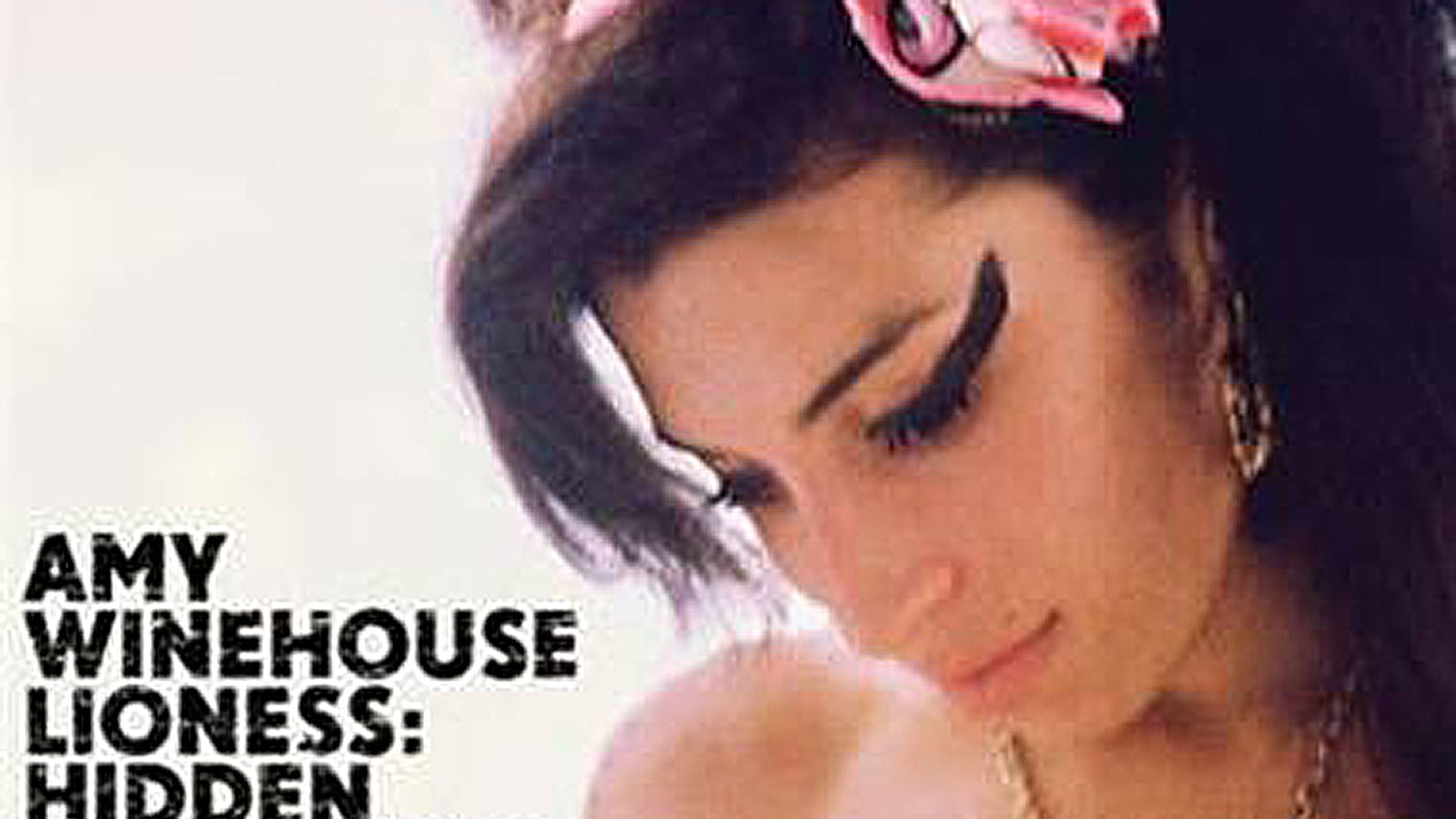1. Xscape, Michael Jackson
The saga that surrounded Michael Jackson continues in death. Sony stands accused of exploiting the late King of Pop, in view of the two parties’ difficult relationship. Escape—or rather “x-scape”—the circus engulfing the second posthumous collection of Jackson’s music and you’ll find reminders of why Jackson mattered so much to music in this eight-track collection curated by L.A Reid. Producers Timbaland, Jerome “J-Roc” Harmon and Rodney Jerkins are all at the top of their game working with Jackson. Standout tracks include the Bad-era sounding Blue Gangsta and the irrepressibly buoyant Paul Anka-written Love Never Felt So Good. It’s not true to say that Jackson has never sounded better, but this is no mere cash cow.

2. Milk and Honey, John Lennon
John Lennon and Yoko Ono’s Milk and Honey was released in 1984, over three years after the former Beatle’s assassination by Mark David Chapman. Assembling the material was understandably harrowing for Ono and the album has unfairly lived in the shadow of Double Fantasy, the record Lennon released just before his death. Rather like John and Yoko themselves, the album is a union of opposites—Yoko’s polished delivery contrasting with the rough sound of Lennon’s unpolished takes. Highlights are the pair’s “Let Me Count the Ways” and “Grow Old with Me,” inspired by the poems of Elizabeth Barrett Browning and Robert Browning, and Lennon’s “(Forgive Me) My Little Flower Princess.” Sometimes dismissed by Beatlemaniacs as throwaway pop, the achingly beautiful “Princess” is less disposable than anything most artists ever record.
3. Nico—Blind Melon
Following the death of Shannon Hoon from a cocaine overdose in 1995, the remaining members of alternative rock band Blind Melon gathered new songs and covers to raise money for the education of his young daughter Nico Blue. What followed turned out to be the group’s masterpiece. Of course, with Hoon’s tragic fate in mind, Nico makes for uncomfortable listening with “Hell” and a cover of Steppenwolf’s “The Pusher.” But whether it was the soar-away epic guitar sound of “All That I Need” or answering-machine-riff “Letters From A Porcupine,” the band hit new heights with Nico that they hadn’t hit before, or it has to be said, since.
4. Mystery Girl—Roy Orbison
I vividly recall, as a 10-year-old in London in early 1989, watching the video of Orbison’s anthemic “You Got It” on U.K. music show Top of the Pops and my brother subsequently explaining that the singer had passed away the previous year. Orbison’s Mystery Girl is the Southern singer’s late-career masterpiece after a fallow period following his phenomenal success in the sixties. Among the highlights are “She’s a Mystery to Me,” one of the better songs written by Bono and Edge outside of U2, and the haunting “A Love So Blue,” written with his fellow Traveling Wilburys Tom Petty and Jeff Lynne. Orbison’s song “Oh, Pretty Woman” was on constant rotation in 1990 off the back of the hit Julia Roberts film Pretty Woman.
5. Pearl—Janis Joplin
Many consider Pearl, released in 1971 three months after Janis Joplin’s death from a heroin overdose, to be an even better record than 1968’s Cheap Thrills. Certainly the full Joplin repertoire is on display in the only album she recorded with her new collaborators, the Full Tilt Boogie Band. Take “Me and Bobby McGee” (co-written by Kris Kristofferson), the country tale of two drifters, the blues of “Cry Baby” or the eerily live-for-the-moment frenzy of “Get It While You Can.” Pearl spent nine weeks on the top of the Billboard 200 and the 2005 Legacy edition, which includes outtakes from Joplin’s 1970 Festival Express Tour and a birthday message to John Lennon, was how to do a re-release.
6. The Don Killuminati: The 7 Day Theory—Tupac Shakur
The prolific nature of Tupac Shakur’s posthumous output—he’s recorded more albums in death than in life—has been the subject of wonder, conspiracy theories (that he is still in the land of the living) and comedy courtesy of Dave Chappelle. We could choose any number of them but perhaps the most impressive is his first posthumous release, The Don Killuminati: The 7 Day Theory (or Makaveli, as it’s more commonly called). Written and recorded in just seven days, Makaveli’s producers QD3, Hurt-M-Badd, and Darryl Harper helped create an intensely emotive and dark sound on “Bomb First” and “Me & My Girlfriend,” but also showcase Tupac’s playful side on “To Live and Die in LA,” a love letter to the West Coast. The album has sold nearly 4 million copies in the U.S. alone, showing how when it comes to musical death, 2Pac is the master of reincarnation.
7. Amy Winehouse, Lioness: The Hidden Treasures
Lioness: The Hidden Treasures is a compilation of unreleased demos and songs chosen by collaborators of the late London reggae and jazz singer, including Mark Ronson and Salaam Remi, as well as by her family. Whether it’s the Tony Bennett duet “Body and Soul”—which blends her vocal kerosene with his musical butter—or her atmospheric cover of Ruby & the Romantics’ 1963 hit “Our Day Will Come,” the album illustrates both Winehouse’s unique vocal strength and the anguished vulnerability that intensified the personal demons which triggered her death in 2011 from alcohol poisoning. Winehouse’s fate is a tragic story but Lioness demonstrates the poignancy and depth of her musical capabilities.
8. Jeff Buckley, Sketches for my Sweetheart the Drunk
Jeff Buckley, the American singer-songwriter who drowned in 1997 at the age of 30, was notoriously dissatisfied during the recording of what would become Sketches for my Sweetheart the Drunk. But the album, released a year after his death, offers a persuasive case for not polishing up a posthumous release. The collection of four-track demos and studio recordings ranges from the sexy guitar funk of “Everybody Here Wants You” to the global call-to-arms contained in “New Year’s Prayer.” It’s impossible not to be reminded of the nature of Buckley’s death when he sings on “Nightmares By The Sea”: “I’ve loved so many times and I’ve drowned them all.”
9. Ray Charles, Genius Loves Company
The legendary soul singer’s collection of duets, Genius Loves Company, is one of the finest collections of its kind, encompassing an eclectic collection of styles and songs. Wonder at both the way Charles and Michael McDonald manage to sing at opposite ends of the musical register on “Hey Girl” without sounding off-kilter and how Charles serves up textbook examples of how to re-record songs with the original artists without killing them (see his collaborations with Elton John on “Sorry Seems to be the Hardest Word” and “Crazy Love” with Van Morrison). Genius Loves Company, which Charles finished recording less than six months before his death in August 2004, was a collaboration with Starbucks. Yet its sound is the musical antithesis of a blended Frappuccino.
10. Joy Division, Closer
The dark claustrophobic sound of 1980’s Closer would have resonated even if Joy Division lead singer Ian Curtis had not committed suicide two months before its release. Aided by Factory Records’ production maestro Martin Hannett, songs such as “Isolation” and “Atrocity Exhibition” fuse Curtis’s haunting vocals with Stephen Morris’s industrial beats, Peter Hook’s bass guitar, and Bernard Sumner’s keyboards to a bleak perfection that could have only originated out of the minds of a coterie of young Northern English musical misanthropes. Joy Division swiftly became New Order and the hard post-punk segued into synthesizer pop that took European clubs and American frat houses by storm, but Curtis’s musical legacy lives on.






